What I’m Doing at Kirkus This Week,
Plus What I Did Last Week,
Featuring Catherynne M. Valente and Ana Juan
 October 7th, 2011 by jules
October 7th, 2011 by jules

This morning over at Kirkus, I’m shining a spotlight on Nursery Rhyme Comics from First Second Books. The link is here.
Last week’s column was an abbreviated Q & A with author Catherynne M. Valente, the author of this year’s much talked-about children’s novel, first published online, The Girl Who Circumnavigated Fairyland in a Ship of Her Own Making, released by Feiwel and Friends in May. Here today at 7-Imp I bring you the interview in its entirety, peppered with lots of beguiling illustrations from the book, created by the one and only Ana Juan. Two friends and fellow children’s-list aficionados joined me on this interview: Kate Pritchard, Associate Editor at BookPage, and Shannon Stanton, a Librarian/Media Specialist here in the Metropolitan Nashville Public Schools. I thank them very much for joining forces with me and for the good questions they contributed.
And I thank Cat for visiting. {NOTE: This interview is spoiler-tastic. Just sayin’ as a warning—for those who haven’t read the novel yet—that there are plot spoilers below.}
7-Imp: What were your first few ingredients when brewing this book?
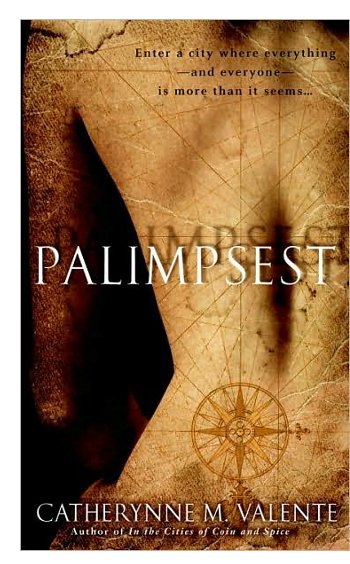 Cat: Fairyland began as a book-within-a-book in my adult novel, Palimpsest. It was the protagonist’s favorite book when she was a child. I wrote the first paragraph, which remains intact, and then a little more (the rules of Fairyland, etc.) for the ARG we created for the novel. I wanted to hint at a book full of strange imagery and non-standard thoughts about life and childhood.
Cat: Fairyland began as a book-within-a-book in my adult novel, Palimpsest. It was the protagonist’s favorite book when she was a child. I wrote the first paragraph, which remains intact, and then a little more (the rules of Fairyland, etc.) for the ARG we created for the novel. I wanted to hint at a book full of strange imagery and non-standard thoughts about life and childhood.
But it started simply–a little girl and a psychopomp and a magical land for her to escape to. And, as my man Tolkien says, the tale grew in the telling.
7-Imp: What was the publication process for the e-book version? What kinds of changes, if any, did you have to make for traditional publication?
Cat: I was asked to increase September’s age to twelve, which I did, and there was some trimming and sprucing — but the novel had already won the Andre Norton Award, and my publishers were kind enough to trust my vision. There are changes, but it was an easy and pleasant process, including the wonderful illustrations as they came in in small batches. I fell so in love with Ana Juan’s work.


which was all through gnome’s skin, too.”
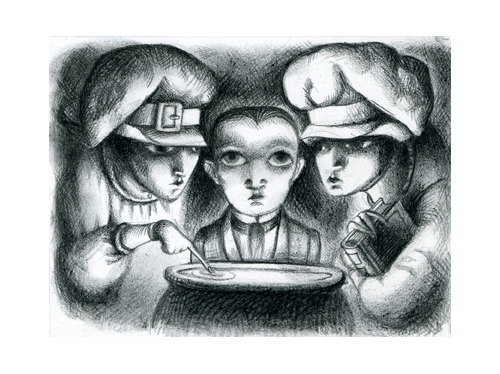
7-Imp: In creating Fairyland, you use some elements from familiar fairytales (the warning against eating fairy food, the fairies’ aversion to iron) and, of course, plenty of new elements of your own devising (the velocipedes, the clocks, too many others to list!). Which traditional fairy-tale elements did you particularly want to keep, and why?
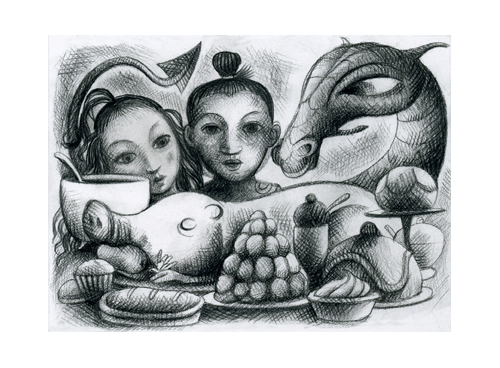
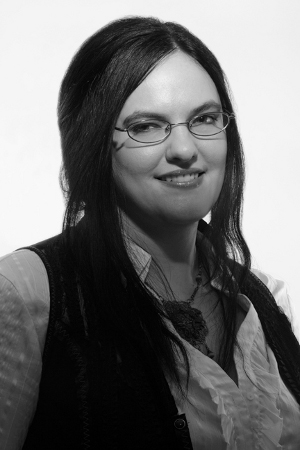 Cat (pictured left): I wanted to keep the resonances with the Persephone myth — so many portal fantasies unconsciously follow that model of the descent into the underworld/fairyland and the return. It is a foundational myth that I wanted to bring to the fore. I wanted to combine folkloric ideas and mythological ideas, the little and the big. I wanted a wicked queen and an animal companion and possibly a magical sword — but I didn’t want any of those things to be clichés, to be received images un-critiqued or deconstructed.
Cat (pictured left): I wanted to keep the resonances with the Persephone myth — so many portal fantasies unconsciously follow that model of the descent into the underworld/fairyland and the return. It is a foundational myth that I wanted to bring to the fore. I wanted to combine folkloric ideas and mythological ideas, the little and the big. I wanted a wicked queen and an animal companion and possibly a magical sword — but I didn’t want any of those things to be clichés, to be received images un-critiqued or deconstructed.
Practically everything in Fairyland takes some aspect of fairy or folktales head on and challenges it.
7-Imp: Why do you think fairy tales have such enduring appeal — for both kids and adults?
Cat: They are our oldest stories, honed down through generations until they are laser-like tools for understanding human behavior, both terrible and wonderful. They are simple, but their images are primordial, essentially and utterly human. The same tales are repeated in different combinations and variations in every culture. They teach us how to survive, how to grow up, how to be honorable and how to behave when others do not treat us with honor. They are condensed gems of cultural knowledge. In a very real way, since we all grow up with them, they create our cultural psychology.
And now we recombine and retell them in order to make them reflect our own culture better — where women are not necessarily only rewards and princes are not automatically just. We engage with them and challenge them so that we can pass them on, shined up and new, but still incredibly old and powerful.

rather like a Leopard.”
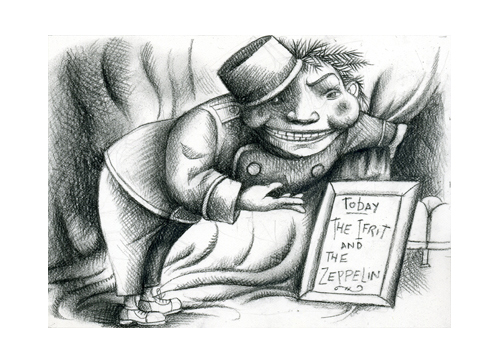
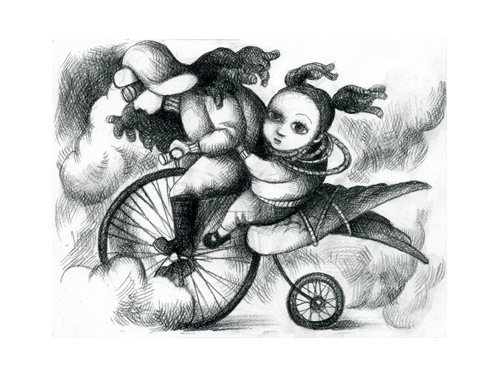
dirty and muddy, but golden all the same.”
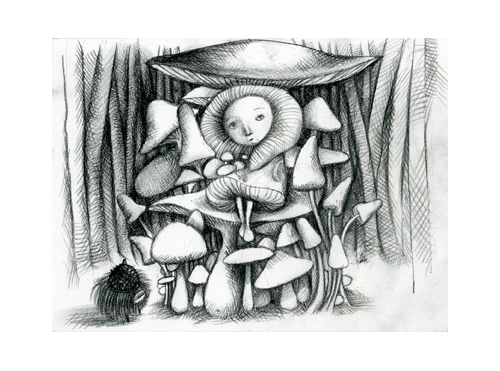
her pale eyes a pair of tiny button mushrooms.”
7-Imp: How and at what point did you decide to use a Victorian style (descriptive chapter headings, Alice-esque quest, etc.?)
Cat: Oh, from the very beginning. Hence the long, long title. In the context of Palimpsest, Fairyland was meant to be a pastiche of a certain kind of children’s literature from the late 19th and early 20th centuries, so it always had those arch asides (which come right out of Peter Pan) and surreally witty characters — although I hardly think a quest is quintessentially Victorian! In fact, I think of Alice as a pure explorer. She doesn’t really have a quest, except to become Queen in the second book. But she’s not a Campbellian hero — she is, in fact, much more like Inanna, heading into the underworld, meeting a terrifying female figure there (the Queen of Hearts or the Red Queen) and coming back out again. (I confess I’ve written a paper to that effect.)
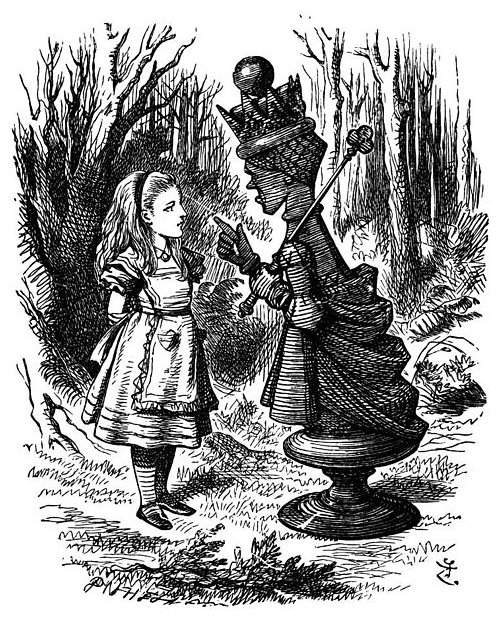
Through the Looking-Glass, and What Alice Found There
I love that style, of the old-school children’s classics. I see no reason to think of it as trunked because trends have moved on — on the contrary, I want to use that beautiful, elegant, witty style to tell a story with modern sensibilities.
7-Imp: It seems that you made nods to Alice, Oz, Macbeth, A Wrinkle in Time, and the Golem. What were other literary sources of inspiration for this book? Also, specifically: Did you get inspiration from Peter Pan in Kensington Gardens? (The original abduction by wind seemed anyway to be an intentional echo.)
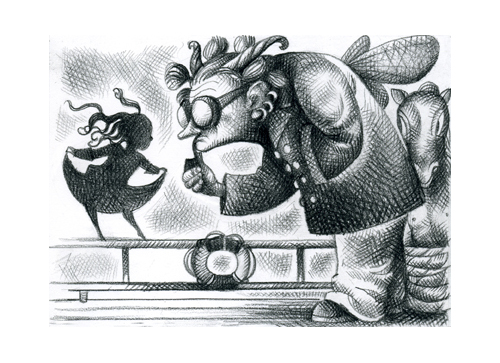
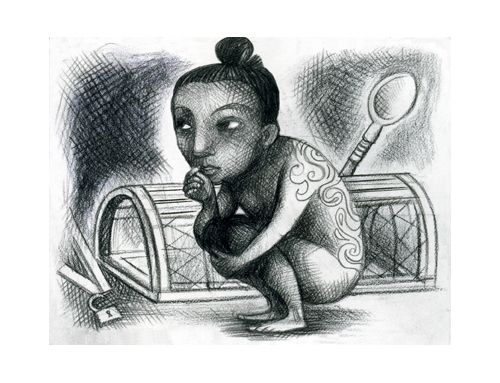
His eyes were huge and black and full of tears.”
Cat: I adore Peter Pan, but I admit I’ve never been to Kensington Gardens. Some of Barrie’s tone and arch asides were definite inspirations, and Narnia (especially the ending of The Lion, the Witch and the Wardrobe, which always troubled me) was often on my mind.
Traditional fairy tales (not just from the West but Japan and elsewhere as well) and folklore continue to be my biggest sources of inspiration, and there [are] a few jokes about Plato, Milton, my graduate program, and John Dee in there as well.
Whenever I write a book, all my current and past obsessions jostle to get in there — Fairyland is packed.
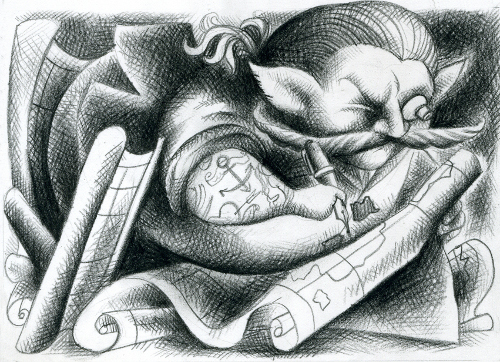
7-Imp: What or who are the inspirations, if any, for your characters?
Cat: I don’t really base characters on specific people, though sometimes there will be a nod, say, to a friend who loves the color orange. But I will say that A-Through-L started out as a giant cat. My friend and amazingly talented cellist, Betsy Tinney, breeds Maine Coons — my cat, October, is thanks to her. And one of her cats, Zeus, is just the most wonderful creature — with the most noble, interesting face. Initially, I had based Ell on Zeus down to his fur. But in the end I wanted something wilder and stranger than a cat.
But I assure you, on the inside, the Wyverary is a large, black and gold Maine Coon, named Zeus.
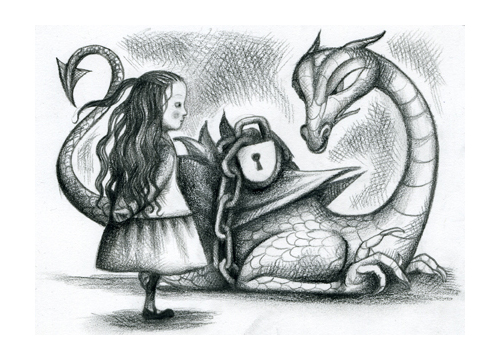
7-Imp: What was it like to see Ana Juan’s illustration work on this book?
Cat: When I first saw it, I was blown away. It’s nothing like what I imagined — and yet utterly perfect. It reminds me of a combination of Frida Kahlo and John Tenniel. I could not imagine a more perfect artist for this book, and whenever I see a new illustration it’s a total joy.

7-Imp: I (Kate, that is) was intrigued by September being one of “the Ravished,” which strikes me as a peculiarly adult word to use in this story. Can you talk a little more about what meaning or resonance that particular word has for you?
Cat: “Ravished” is a funny word. Of course, it has a very adult and negative meaning, but when something is beautiful, we also say it’s “ravishing.” I remember back in my Latin classes in college discovering it really only meant “stolen.” Which in all of its current meanings is a fascinating route. I wanted a word that meant beautiful, and swept away, and also stolen — with a dark undertone. “Ravished” was it. I’d been waiting to use it since college.
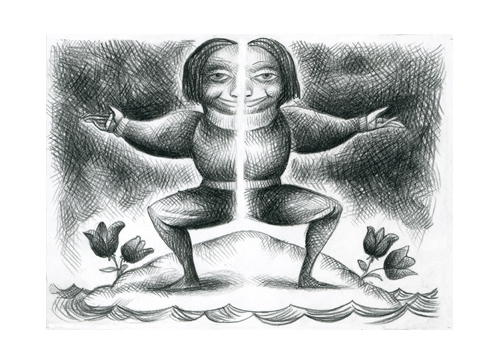
7-Imp: I (Kate again) loved the revelation that the Marquess is really Queen Mallow, who once ruled Fairyland but was then returned to the human world with no warning, and had to be a little girl again. That always struck me as a terribly unfair fate for characters who got to visit magical lands, like the Pevensies in the Narnia books. Do you see this book as a response to those or similar stories, in some way? Did you feel you were trying to “correct” certain wrongs from other stories?
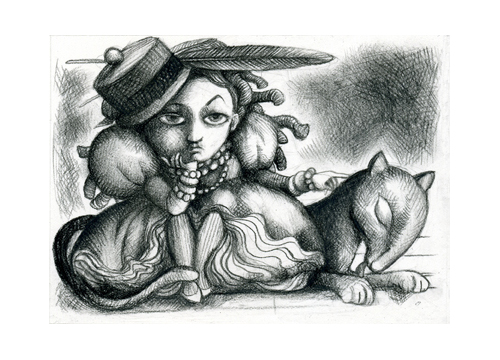
watched September out of one green eye.”
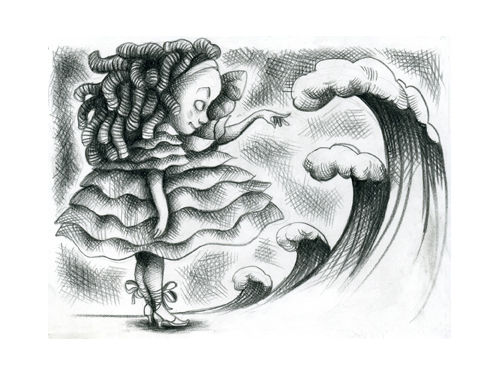
turning at a creeping pace.”
Cat: I absolutely did. When I was a child, I thought The Lion, the Witch and the Wardrobe was a horror story — a grown person, who probably, despite Lewis’s discomfort with relationships and sex, had a spouse and children, put suddenly back into their prepubescent body in the middle of WWII? I cried for days.
It’s a common trope in children’s books, a kind of reset button, and I’ve always hated it — second only to everyone forgetting everything at the end. It’s a personal quirk. I just could never bear the thought of losing that magical life, having it stolen away. I wanted to show what the actual consequences of that would be.
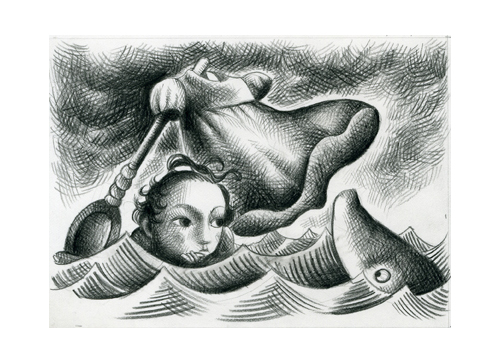
7-Imp: I (Jules) was struck by the veracity of the “children are heartless” moments. Did you have to work hard to reconcile that in the tale itself with some of September’s clearly very heart-felt moments?
Cat: Well, September is only Somewhat Heartless. She is growing up, struggling with who she is and who she will become, naturally empathetic, but also very concerned with her own safety and ability to see wonderful things in Fairyland, above all — as most real children would be. Over the course of the story she becomes attached to her friends, can even feel sorry for the Marquess. But she is still a child who can go home and fall asleep after all these adventures, she has not quite yet had her heart broken, has not quite grown up. She’s lost her heart in Fairyland, but it’s still whole.
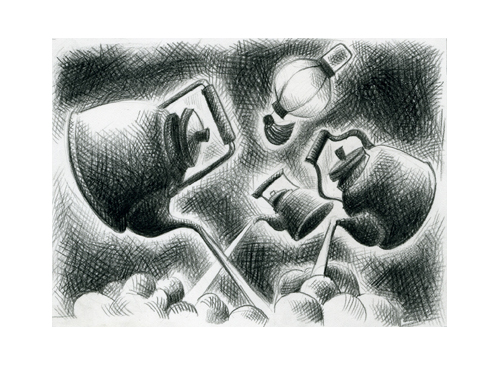
7-Imp: How did you so expertly keep the balance of the text, as it seems you could have easily run rampant with your whimsical descriptions or interrupting narrator?
Cat: Well, I’m glad it seems expert! I reined myself in a lot and ran mostly on instinct. Because it was a serial, everything needed to be quick and exciting — I think that helped the pacing a great deal.
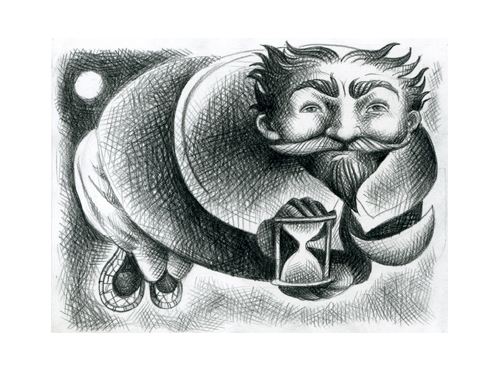
7-Imp: What was it like winning the Andre Norton award? How did it—and all the early critical acclaim, in fact, for this book, not to mention its immediate rise on the New York Times bestseller list—impact your writing, if at all?
Cat: The Norton award was amazing — I was absolutely certain I would not win. I had a beautiful orange dress, and I took my husband to see the shuttle launch that weekend in Florida, but I was there to have fun, not to win. I only wrote a speech on my napkin just in case. Still, I was so nervous I couldn’t eat. In the end, the announcer didn’t get through two words of the title before the room burst into applause. I was just stunned.
The acclaim and the NYT list and all of it — it’s astonishing and wonderful. I never expected such things would be part of my life. I write odd, offbeat books, and it just never occurred to me that these things could happen.
That said, there is a certain pressure that is new. I hope I can keep making kids happy.
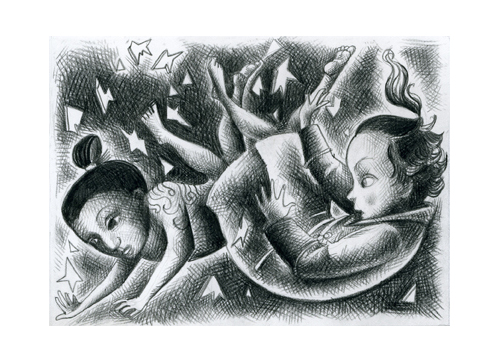
7-Imp: As book lovers, it interests us: What books or authors and/or illustrators influenced you as an early reader?
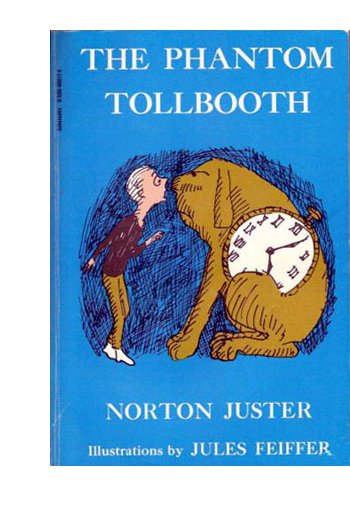 Cat: The Neverending Story, The Phantom Tollbooth, Interstellar Pig, Narnia, The Lord of the Rings, The Wind in the Willows, The Secret Garden, Shel Silverstein, Jacob Have I Loved, and the complete works of Stephen King. The usual!
Cat: The Neverending Story, The Phantom Tollbooth, Interstellar Pig, Narnia, The Lord of the Rings, The Wind in the Willows, The Secret Garden, Shel Silverstein, Jacob Have I Loved, and the complete works of Stephen King. The usual!
7-Imp: Any new titles/projects you might be working on now that you can tell us about? Can you give us a sneak peek into the sequel to this book by telling us a bit about it?
Cat: I’m hard at work on the sequel! It’s called The Girl Who Fell Beneath Fairyland and Led the Revels There, and it’s about September going down into Fairyland-Below to deal with her shadow, who has become queen of the underworld.
I’m also working on two adult novels, an art-deco space opera, and a magical realist historical novel.
7-Imp: Do you own any cats or wyveraries of your own?
Cat: I have a Maine Coon, named October, who is a huge yak of a marvelous cat, a tabby named Nola, a German Shepherd named Grimm, a Golden Retriever named Sage, and six chickens: Billina, Pertelote, Black Chocobo, Nanny Ogg, Ziggy Stardust, and Dinosaur.

Jules: What is your favorite word?
Cat: “Yes.”
Jules: What is your least favorite word?
Cat: “Hysterical.” It’s an ugly word with an ugly past and is almost always used to dismiss and harm.
Jules: What turns you on creatively, spiritually or emotionally?
Cat: Radical sincerity. Enthusiasm, passion, bare-bones love and want and excitement — to see it in others, to read works full of it, to witness or be involved in art that is not ironic or detached but profoundly sincere and invested in the world.
Jules: What turns you off?
Cat: I suppose the opposite of that. Detached coolness, insincerity, cleverness without heart — which is not to say I’m anti-academic. Some of the biggest hearts I know belong to academics. But in art or life, to simply shrug and make a joke, even a good joke, to affect a stance of being uninvolved or unmoved. Which I
suppose falls under hypocrisy, to pretend one is something one is not.
Jules: What is your favorite curse word? (optional)
Cat: “Fuck,” because it’s so incredibly versatile and limber as a word. It can be used any way, slipped into any other word. Also, it still has the power to shock — it’s the f-bomb, after all.
Jules: What sound or noise do you love?
Cat: The strong howl of the wind in autumn through empty trees on my cold New England island.
Jules: What sound or noise do you hate?
Cat: When someone keeps using a pencil eraser and it’s been worn down to the nub and the metal scrapes the paper.
Jules: What profession other than your own would you like to attempt?
Cat: Time-traveler.
Jules: What profession would you not like to do?
Cat: I’m going to be sincere and say that, having worked retail, it is a profession I would give anything to never come near again.
Jules: If Heaven exists, what would you like to hear God say when you arrive at the Pearly Gates?
Cat: “Thank you, Mario, but our princess is in another castle. Meaning: the battle always goes on, and existence, striving, love and the quest never ends.”

THE GIRL WHO CIRCUMNAVIGATED FAIRYLAND IN A SHIP OF HER OWN MAKING. Copyright © 2011 Catherynne M. Valente. Illustrations © 2011 Ana Juan. Illustrations reproduced by permission of the publisher, Feiwel and Friends, New York.

Thank all of you for this wonderful interview (and a special hug to Kate: we in Massachusetts miss you!) I just asked my students, after reading original fairy tales, to write one, so I’m sending them over here for inspiration. I’m sorry The Girl Who came out too late to put on the syllabus this semester, What a beautiful novel.
I had no idea there was a sequel coming, and I am completely tantalized at the idea. This was really an amazing book, and even though I can’t experience it for the first time again, I can’t wait to see it anew through my son’s eyes. Although that will probably have to wait a few years, since he’s 8 months old.
Ooooooh, Ana Juan…my hero. Great interview too.
What a wonderful interview!
This is a fantastic interview. My two favorite parts:
“They teach us how to survive, how to grow up, how to be honorable and how to behave when others do not treat us with honor.”
and:
“Radical sincerity. Enthusiasm, passion, bare-bones love and want and excitement — to see it in others, to read works full of it, to witness or be involved in art that is not ironic or detached but profoundly sincere and invested in the world.”
Both made me say, “YES, THAT!”
I had no idea about this book’s path to publication, either. Very interesting all around.
[…] What I’m Doing at Kirkus This Week,Plus What I Did Last Week,Featuring Catherynne M. Valente and A… October 7th, 2011    by jules […]
Strange, Beautiful and Wonderful, this book will be mine! Great interview, Thanks Jules!
[…] more Fairyland art in this 2011 7-Imp post, as well as a Q&A with […]
[…] credit: http://blaine.org/sevenimpossiblethings/?p=2216 […]